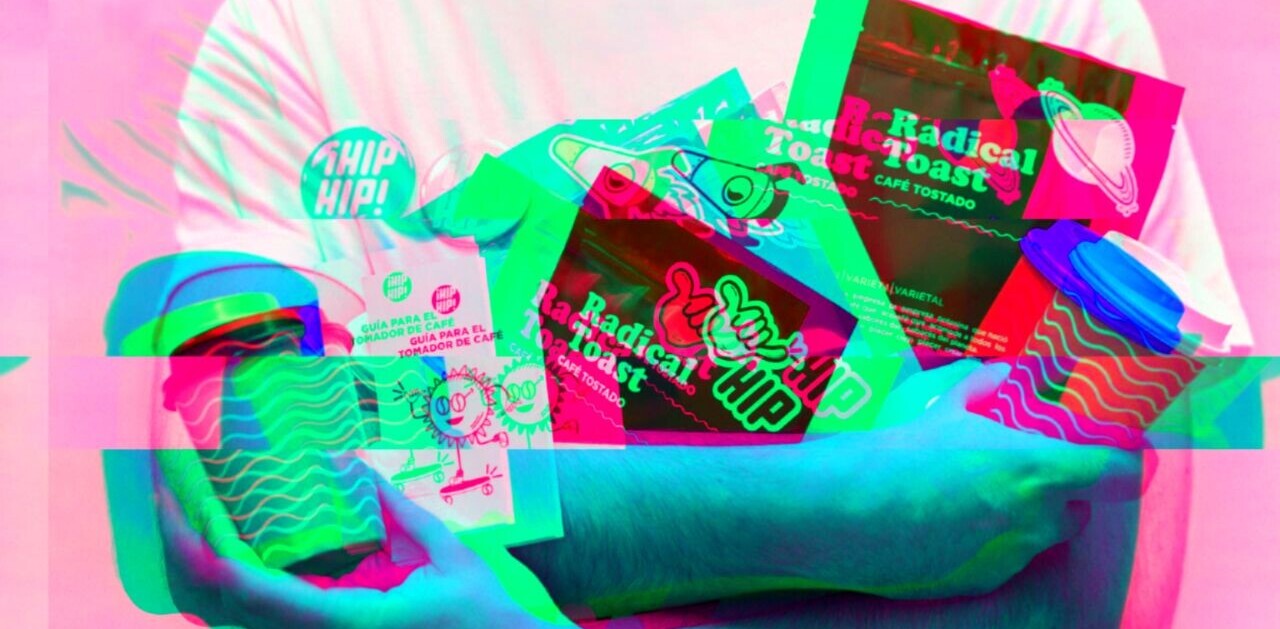
Jason SurfrApp is the founder of IWearYourShirt and author of Creativity For Sale. This post originally appeared on Jason’s Medium blog.
I’ve landed over 2,000 sponsors and generated $1,000,000+ in revenue through sponsorship driven projects. Let me show you how I’ve done it.
Maybe you want to get sponsorships and have tried before without success. Maybe you want to get companies to support your blog, business, or idea, but don’t have experience landing deals. Getting a business to sponsor your next thing doesn’t have to be sleazy and is much easier than you think.
Since 2008, I’ve landed over 2,000 sponsorships with various projects. I’ve worn sponsored t-shirts, I’ve had a sponsored car, my trip to SXSW in 2011 was completely paid for by a sponsor, I even turned a 90-day fitness challenge into an opportunity to get paid to get in shape (yeah, that was awesome).
It took me years of trial and error to develop a system that works. I certainly made tons of mistakes, but I’ve also had some great successes. Just recently I launched a sponsored book project that generated $75,000 in revenue. This isn’t luck, it’s putting in effort and using techniques that actually work.
I’ll share these techniques below in a set of seven steps.
Step 1: Creating your value proposition
Your value proposition is a paragraph or two that clearly explains the thing you are trying to get sponsors for. For years I struggled to write a concise value proposition. What I found was that most businesses I reached out to asked a similar set of questions:
- What is the mission of the thing you are trying to do that you need sponsors for?
- Who is the demographic?
- What is your audience size?
- What benefit does a sponsor get?
- Is anyone else on board, or has anyone talked about this (credibility building)?
- How will this help my company?
Answering these questions will help you create your value proposition. Your answers should range from one to two sentences and should focus on the specific benefits you will provide. Take a sentence from each answer and massage it into a four to six sentence paragraph.
Here’s an example value proposition I made for a conference I was hosting:
The Amazingly Awesome Conference will focus on teaching people how to do marketing more efficiently and with better results. We’re inviting people who are passionate about marketing to join us in Jacksonville, FL on May 6, 2015. The conference will cap at 300 attendees and tickets go on sale to the pre-sale list on our website first (January 1, 2015).
Our conference organizers have worked with companies like Starbucks, Nissan, Jockey, and are flying in some of the best speakers in the world including Name Drop, Name Drop, and Name Drop. We’re excited to make a dent in the marketing world and have our attendees learn new information and about new products.
This value proposition should be used in upcoming steps I’ll be sharing, on your website, to your email list, on social media, etc. Use the heck out of this thing!
Step 2: Organize your existing contact list
Your existing network is one of your most powerful assets. Whether you have 100 contacts in your address book or 10,000, these people are your starting point. Here are four things to realize about this list of people:
- You’ve already established trust with them. (unlike social media)
- While they may not be potential sponsors for your event/blog/thing (although you might be surprised) they’ll be your best chance at helping you find referrals, get introductions, and give you feedback.
- Feedback can be more important than sales in the beginning.
- You don’t need a ton of contacts (I started out with just 200 in 2008).
Build a Google Spreadsheet (or Excel) with your contacts in it. I recommend column headings of Name, Email, Business, How You Know Them,Contact Date, Response?, Introductions?, and Notes.
There are probably CRMs out there that you can pay for, but I like the simplicity of Google. We’ll talk about what to do with this list in Step 3…
Step 3: Your first email to your contacts
There are some very important things to remember when you’re sending an email to your contacts about the thing you want to get sponsorships for.
- Don’t think of them as sales opportunities
- Do not mass email people (personalize, personalize, personalize)
- Remember the trust you’ve built, keep it intact by being personal and asking for help/feedback
- Think short and sweet (people are busy!)
Here’s an example email I would write to someone on my contact list for the conference I mentioned in Step 1:
Hope all is well with you! Thanks again for dinner last week it was a blast. [IMPORTANT: You want to show these aren’t mass emails]
If you haven’t heard, I’m running an awesome conference on May 15, 2015 in Jacksonville called The Amazingly Awesome Conference. I’m super excited about it and I’d love to ask for your help on two things. It’ll only take you a minute or two, I promise!
1. We’re looking to secure sponsors for the conference. I was wondering if you can think of businesses owners that might be a good fit for me to pass along some information? If you do, I’d love a really quick email introduction! I’ll do the hard work from there.
2. Aside from those introductions, do you have any thoughts for me or feedback? Have you been to any conferences and remembered things you loved or hated? If you want, feel free to check out our website at amazinglyawesomeconference.com.
Really really appreciate your time and help with a couple introductions!
Monitor the responses you receive from these personalized emails. I guarantee you’ll be surprised at how many paying sponsors show up if you’re offering something they think might be valuable to them. Be diligent in updating your Google Spreadsheet!
Step 4: How to send an actual pitch email
Pitch emails are different from emails to your contact list. Unlike your contact list, the people you send pitch emails to probably won’t have any context with you (or established trust). Because of that, keep a couple things in mind:
- Personalize your emails, again, do not mass email a list
- What problem can you solve for them with your offer?
- Include pricing, but show the value
- Use another Google Spreadsheet to keep track of “leads”
You can use a similar version of the email template in Step 3, but you’ll want to make sure you put your value proposition in the email.
Step 5: The secret art of the follow up email
Follow up emails are EXTREMELY important in closing deals. I’ve come to find that 75 percent of the sponsorships I get come from a follow up email, not from the initial pitch email.
Follow up emails work well because people are busy, especially people you’ve never emailed before. I, personally, tend not to respond to the first pitch emails I receive and wait for people who actually put in effort and follow up with me.
While following up can seem like a daunting task, you can actually streamline the process greatly by using FollowUp.cc. It’s a completely free service that let’s you put a time you want to follow up directly in the Bcc field of the first pitch email (ex: 6days@followup.cc would send you a follow up reminder 6 days after sending your first email).
If you’ve created a separate Google Spreadsheet for your email pitches (which you should), make sure to include a Follow Up column. Again, be diligent about updating this spreadsheet.
Step 6: Dealing with the dreaded “No”
Let’s be honest. If you’re sending pitch emails, you will probably get some “Nos.” I’ve received plenty of them, but I don’t let them discourage me. Don’t get offended when someone says no and realize that people aren’t saying no because you’re a bad person, they’re saying no because:
- Your sponsorship might not be a good fit
- They may not pay for advertising/marketing
- They may not have the budget
- They could have a conflicting event
- Maybe they had a bad experience with another conference
- They could just be jerks… (jk, maybe)
As crazy as it may sound, I’ve turned multiple “No” emails into sales. This isn’t because I’m an amazing salesman, it’s because if I really wanted to land the deal, I’d try again a different way.
Just sending a pitch email isn’t always the answer. Often times you need to get creative and think outside the box.
Step 7: Under-promise and over-deliver
This one is simple. Don’t offer everything and deliver crap. You should plan to “wow” your sponsor with extra stuff they didn’t expect.
A quick example of this is the company Headsets.com. It has a 2-hour customer service call-back guarantee.
If you submit a request, they guarantee a call within 2 hours. However, behind the scenes, it’s actually a 1-hour guarantee. So they always impress customers by calling them early (over delivering).
For whatever thing you are trying to get sponsors for, make sure your pitch doesn’t sell a 2014 Mercedes Benz and deliver a 1982 Ford Taurus. You want sponsors to be happy enough that they come to you asking to give you more money.
If you’re interested in learning a ton more about getting sponsorships, I created an entire online course called How To Get Sponsorships For Anything.Hope you enjoyed the steps and I’m sure you can apply them to multiple other areas of business, sales, and marketing.
Read next: Email etiquette for entrepreneurs: How to get busy people to care
Top image credit: Shutterstock/Paul D Smith
Get the TNW newsletter
Get the most important tech news in your inbox each week.






